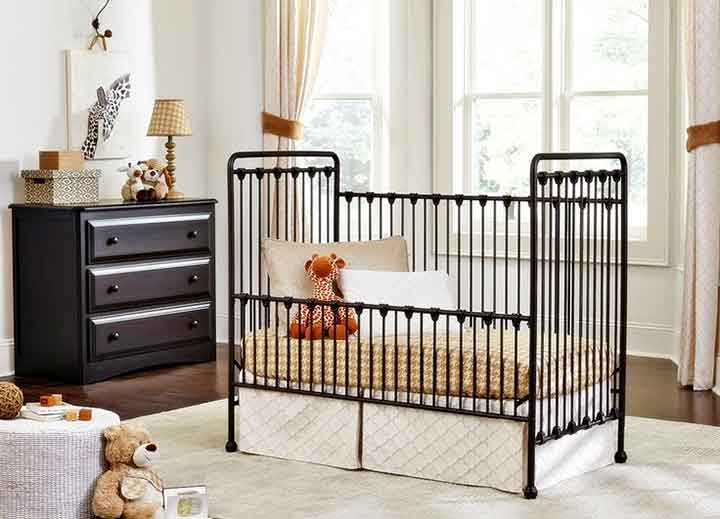As my parents were approaching the age of downsizing their earthly possessions, I became the recipient of the generational family crib. It was the wrought iron crib that my father and his 12 siblings were tended to in their first months as infants during the early 1900s. It was the crib that my four siblings and I called home when we were babes. By current standards it would be deemed unsafe based on the distance between the rungs of the crib.
My father’s childhood was a time to which our current economic slowdown would blush. My grandmother provided for her family by canning hundreds of quarts of applesauce, tomato juice and meat to feed the thirteen growing faces that presented each morning to her table. My grandfather walked miles a day to a job that yielded $2 a day. Times were tough—from where would daily sustenance come?
The task of providing food for 13 paled to the challenge of tending sick children. There were no antibiotics for strep throat nor vaccines for childhood diseases. Diphtheria claimed David when he was seven and Minnie when she was three. The family home came under quarantine and my father recalls the horse-drawn hearse entering the homestead driveway and carrying the bodies of the two young children away. Faces pressed against the windowpane, no one was allowed to leave the house. Those who loved these precious children could not attend the funeral.
Several years ago our daughter was crossing that precarious bridge between dependence and independence that occurs when the tassel is moved from one side of the graduation cap to the other. It was the most difficult time in my life to that point and was not sure how our family would emerge.
When our daughter was away at college, I brought the crib home, had it refinished and placed it in her childhood bedroom. I would often stand in the room by the crib and pray for her health and safety.
One day while pausing in silence over the crib I was drawn to the image of my grandmother. I clearly saw her standing at the bedside over her dying children. At that moment, I felt her anguish. Although my child was not physically dying, I felt that mentally and emotionally she had the potential to slip away. I envisioned my grandmother standing and pleading for the lives of her children. I pleaded in the same way for my daughter. I sensed my grandmother standing beside me interceding for my daughter—her granddaughter—just as she had done for Minnie and David. It gave me great comfort!
As I further contemplated in the coming days I was drawn to the idea of how most of our time as nurses is spent at the bedside. News of sadness and news of joy are issued here and we have the intimate assignment of standing there.
The phone rings in the middle of the night summoning family to the emergency department. It is at the bedside they learn the news they hoped would never be theirs to hear.
When the infection is resistant, the blood flows faster than it can be replaced, the clot is too big to sustain life, the tumor is back—we stand at the bedside.
A patient presents so short of breath from an asthma flare that they cannot speak more than a word without taking a breath. We deliver treatment so that in a short period of time they can look at us, smile and speak three words at a time. The patient receives relief through our nursing practice—at the bedside.
The long awaited newborn is delivered with joy. Patients make the turn from grave illness to health. Stents are placed, blood flow is renewed, consciousness returns, fevers break and pain is relieved at the bedside.
Dreams are both realized and shattered as we stand in attendance actively intervening and silently pleading. Tears of joy and sadness flow. I have been blessed to see the light return to my daughter’s eyes. Additionally I have gained a new respect for the position we hold as we stand in advocacy. It is from that sacred place that our profession can personalize our nursing practice and make a positive difference in each individual life we touch.
Joyce Zehler, RN, is a staff nurse in The University of Cincinnati Emergency Department.
From our readers gives nurses the opportunity to share experiences that would be helpful to their nurse colleagues. Because of this format, the stories have been minimally edited. If you would like to submit an article for From our readers, click here.


















